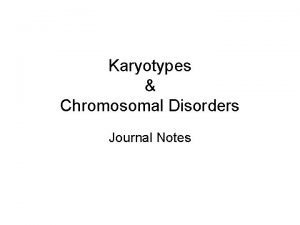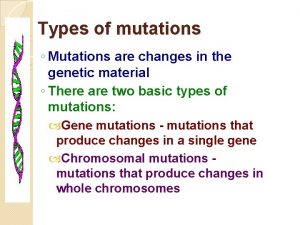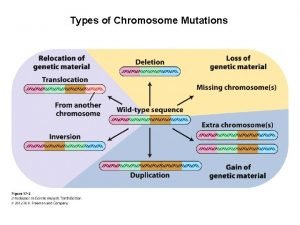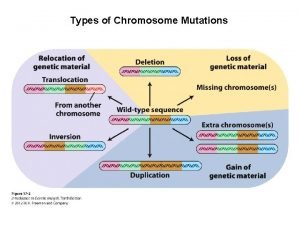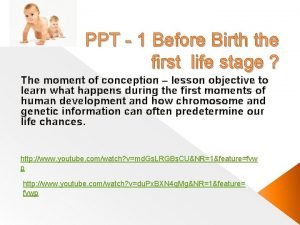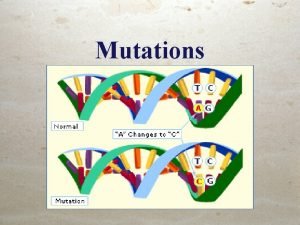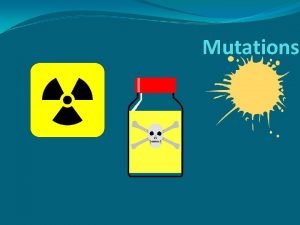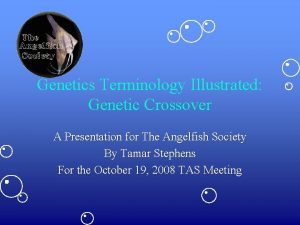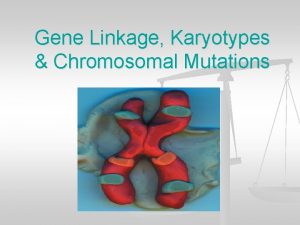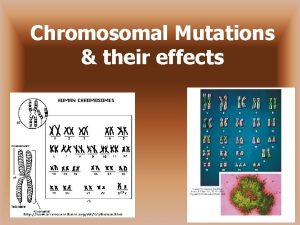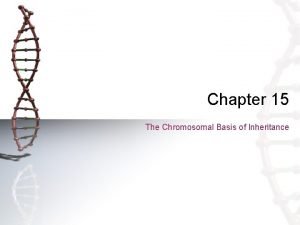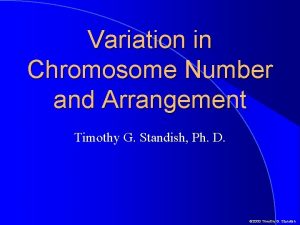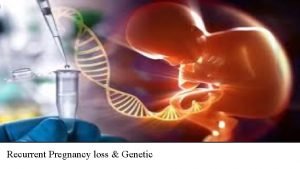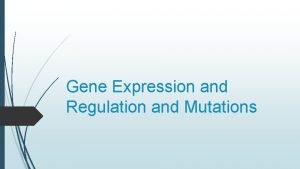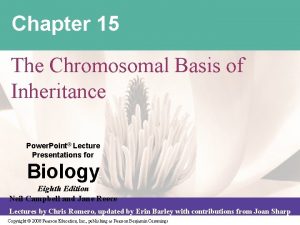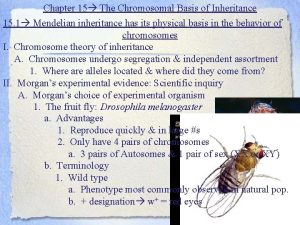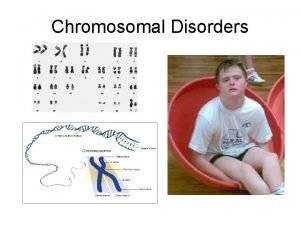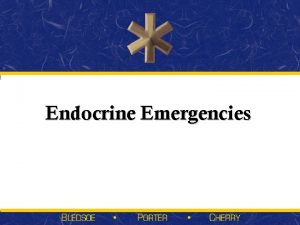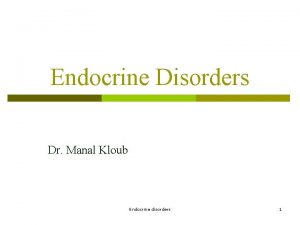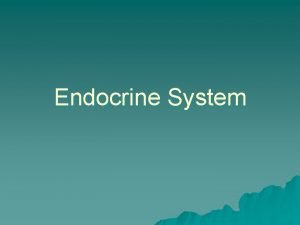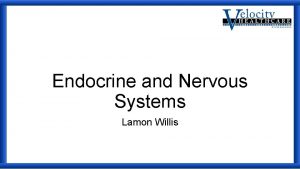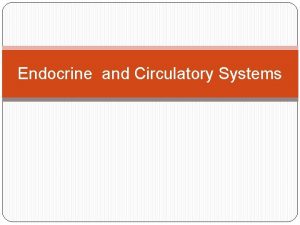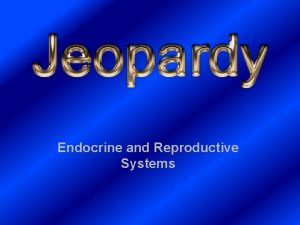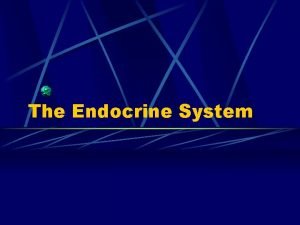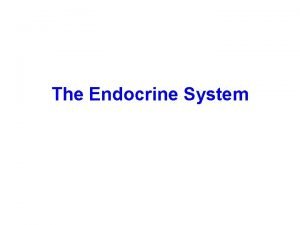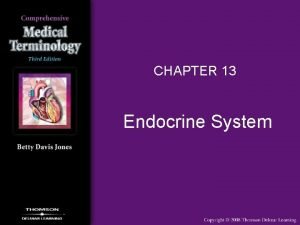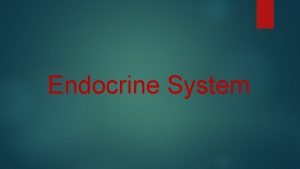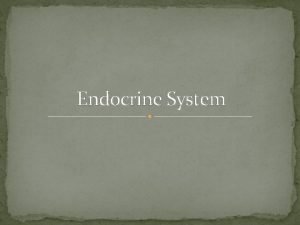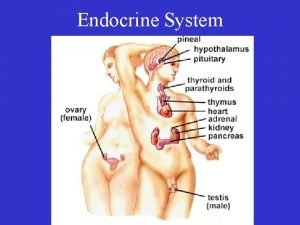Chromosomal and Endocrine Disorders 2005 Chromosomal Disorders n

















- Slides: 17

Chromosomal and Endocrine Disorders 2005

Chromosomal Disorders n Downs syndrome n n Trisomy Translocation Mosaicism Risk Factors

Downs Syndrome - Physical Signs n n n eyes face hands feet musculoskeletal


Down Syndrome

Physical Problems n n n High risk for: Heart malformations Respiratory infections Atlantoaxial instability others: leukemia, hypothyroidism

Nursing Interventions n High risks of respiratory infection n Altered growth & development n Difficulty eating n Altered family process

Endocrine Disorders Growth Hormone • Hypopituitarism n Deficiency of GH n Treatment: replacement therapy

Growth Hormone Disorders • Hyperpituitarism Excess before epiphyseal closuregigantism Excess after epiphyseal closure acromegaly Treatment: Surgery, radiation

Other Endocrine Dysfunctions n Hypothyroidism n congenital n acquired n Pancreas n diabetes in children n Type I

Hypothyroidism n n n Screen at birth Hormone necessary for brain development first 2 years of life Necessary for linear growth during childhood.

Hypothyroidism n n n Permanent brain damage Severe retardation Very thick dry skin Tongue thick Saddle nose

Cognitive Impairments n n Mild: IQ – 50 -70 slower to achieve motor milestones, self care, language. Can reach 3 rd to 6 th grade level. Achieves adequate vocational and selfmaintenance skills Moderate: - IQ - 35 -50, noticeable delays in motor, and speech. Performs simple tasks in sheltered conditions.

Cognitive Impairments n n Severe: IQ 20 -40. Marked motor delays. Little or no communication skills. Needs protective environment repetitive activities and direction Profound: IQ below 20 minimum capacity for functioning, needs total care. Achieves the mental age of young infant.

n n Educable (EMR), Mildly retarded Trainable (TMR), Moderately retarded

Early Interventions programs n n n Promote child’s optimum development Self-help skills Communications Socialization Sexuality

Hospitalization n n Consult with parent about the child’s abilities using open-ended questions. Determine child’s functional level, any special devices any techniques the parents use. Encourage independence. Follow home routines as possible Place child with developmentally similar roommate and playmates.
 Difference between mendelian and chromosomal disorders
Difference between mendelian and chromosomal disorders Chapter 46 digestive and endocrine disorders
Chapter 46 digestive and endocrine disorders Chapter 29 endocrine and metabolic disorders
Chapter 29 endocrine and metabolic disorders Types of mutations
Types of mutations Chromosomal mutation deletion
Chromosomal mutation deletion Deletion chromosomal mutation
Deletion chromosomal mutation Williams syndrome
Williams syndrome Mutations are any mistake or change in the...
Mutations are any mistake or change in the... Celebrities with xyy syndrome
Celebrities with xyy syndrome Chromosomal crossover
Chromosomal crossover Chromosome mutation
Chromosome mutation Karyotype mutations
Karyotype mutations Chromosomal theory of inheritance
Chromosomal theory of inheritance Chromosome numbers
Chromosome numbers Chromosomal abnormalities miscarriage
Chromosomal abnormalities miscarriage Examples of chromosomal mutations
Examples of chromosomal mutations 15/16
15/16 The chromosomal basis of inheritance chapter 15
The chromosomal basis of inheritance chapter 15
